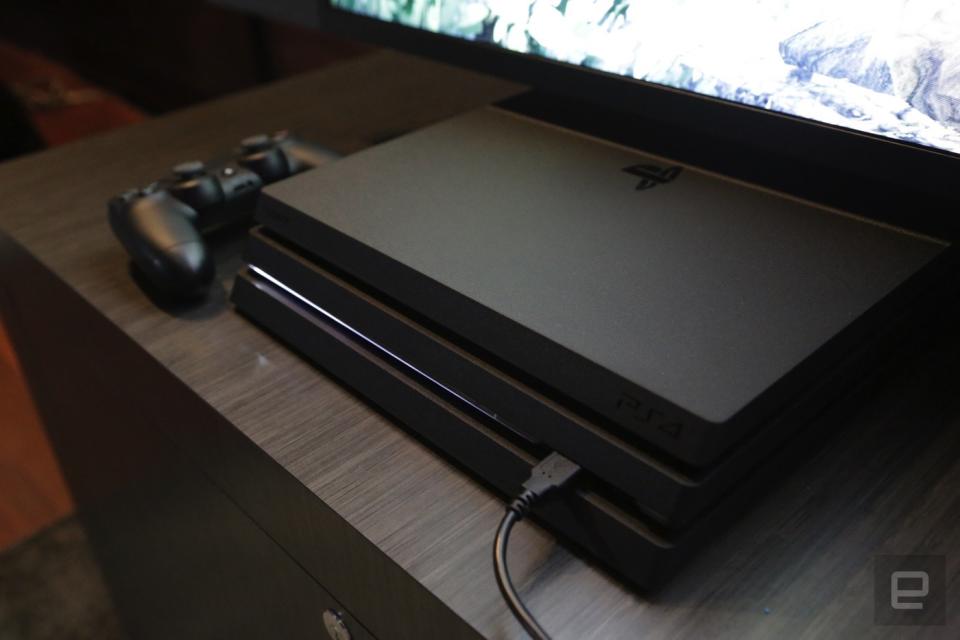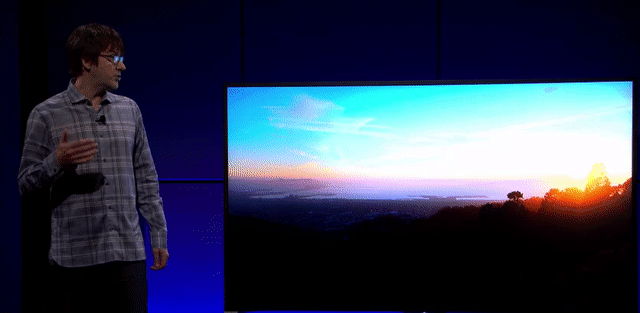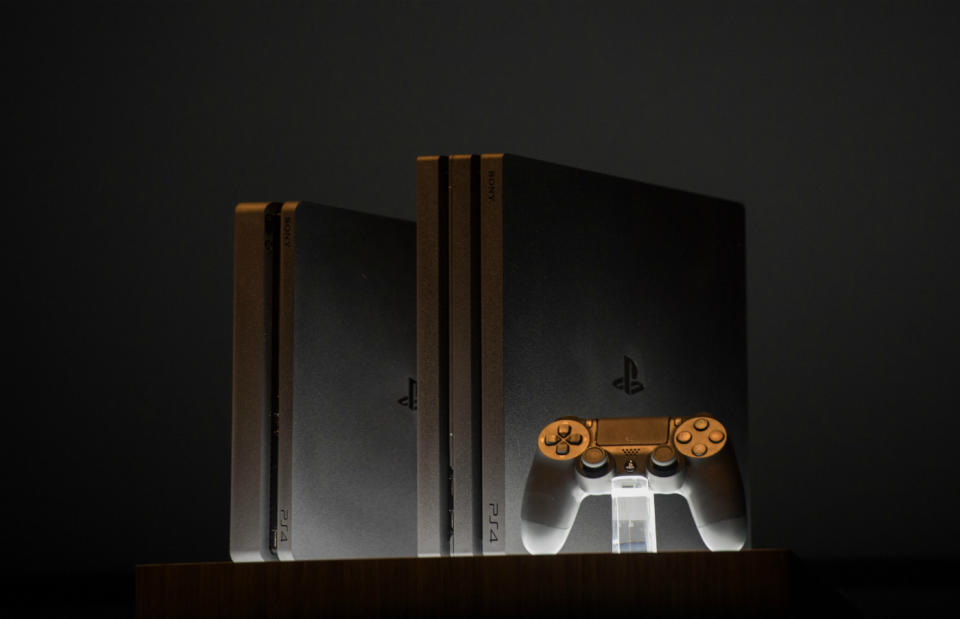The PS4 Pro, as explained by the man who designed it
Sony hardware architect Mark Cerny justifies the existence of a not-quite PS4K.

Sony really wants to clarify a few things about the PlayStation 4 Pro:
First, the Pro doesn't signal the end of video game console generations, even though its specs and launch window fit a pattern that resembles PC or smartphone upgrade cycles more than traditional console releases. Second, the Pro is valuable even if you don't have a 4K TV. Third, though most games on the Pro won't actually be rendered in true 4K, they're still much improved over the standard PS4.
Sony probably feels the need to clarify these points because after it revealed the PS4 Pro in September, there was some confusion over the capabilities and identity of the new console. It was pitched as a mid-generation upgrade that would usher in an era of 4K gaming, but after the scripted presentation, it became obvious that 4K was still out of reach for most developers. At the launch event, we found just one game on the demo floor that actually ran in 4K (that would be Elder Scrolls Online) while others took advantage of the Pro's upgraded guts in other ways. Impressive ways, but not 4K.
After the reveal, it was unclear who the PS4 Pro was built for and what it signaled for the future of gaming consoles. It joined Microsoft's Project Scorpio in blurring the generational divide, and with all of this talk about 4K, its benefits for HDTV owners were uncertain.
That's when Mark Cerny stepped in.
Cerny is the architect of the PS4 and a highly respected veteran of the gaming industry. He introduced the Pro at Sony's September event, and he followed that presentation with a behind-closed-doors meeting this week, diving deep into the console's technical aspects. In other words, Cerny is Sony's cleanup crew.
"PS4 Pro is not the start of a new generation and that is a very good thing," he said. "We don't believe that generations are going away. They are truly healthy for the industry and for the gaming community. It's just that the objectives for PS4 Pro are going to be different."

Cerny is adamant that console generations are a useful, necessary aspect of the video game industry. He repeated the line "generations are a good thing" throughout the meeting, reciting it like a mantra.
However, the definition of a console generation is changing, and right now the PS4 Pro is leading the charge. It isn't a traditional, expected slim model with slightly upgraded specs and a fresh look -- in fact, Sony just released one of those consoles as well. The Pro is bulkier and significantly more powerful than the standard PS4 or the new and improved slim version. Plus, the Pro costs $400 compared with the slim's launch price of $300.
The Pro is a dividing line. The PS4 is not Sony's latest and greatest piece of gaming hardware anymore: That distinction belongs to the PS4 Pro. When the console hits store shelves on Nov. 10th, there will be haves and have-nots, just as there are people who got the iPhone 6S Plus the day it came out, if only to show off to anyone who owned the suddenly outdated iPhone 6 Plus.
Cerny doesn't see the PS4 Pro as a new generation for two reasons: It doesn't have significantly more memory or a new CPU.
"For me, one of the hallmarks of a new console generation is the use of significantly more memory," he said. "By contrast, the PS4 Pro is definitely part of the PS4 generation, so we took a different direction with the console. We felt games needed a little more memory, about 10 percent more, so we added about a gigabyte of slow, conventional DRAM to the console."
The PS4 Pro uses this memory differently than the standard PS4. On the PS4, if you open Netflix and then swap to a game, Netflix remains resident in system memory, allowing for fast swapping between the two apps: Nothing needs to be loaded. The Pro, however, allocates background tasks to the 1GB of slow, conventional DRAM, freeing up more memory for the active apps (and allowing the home screen to resolve in 4K rather than the standard model's 1080p).
Additionally, the PS4 Pro features an 8-core AMD Jaguar CPU, just like the standard model. This means it doesn't use a brand-new CPU -- another aspect that would herald an entirely new console generation, in Cerny's eyes.
"With PS4 Pro, one of the primary targets is flawless interoperability between two consoles," Cerny said. "We chose a different path [than a new CPU], keeping Jaguar as the CPU and boosting the frequency as much as possible."
So there's the technical definition of a new generation and then there's the social distinction. Regardless of whether players view the Pro as a more powerful, generation-skipping console, Cerny is adamant that the hardware itself is not upgraded enough to be a new generation.
But that's just hardware. Games on the PS4 Pro will also use new software tricks to beef up their graphics and gameplay across SD, HD and 4K TVs. The newest, most game-changing technique is called checkerboard rendering, a process that was first used in Rainbow Six Siege.

Checkerboard rendering changes the shape of pixels; they're no longer square. Instead, this process relies on delineated horizontal rectangles that each include one color, one Z value and one ID buffer (the building blocks of game graphics). Using data from previous frames to fill in information gaps, checkerboard rendering enables developers to build a more complete, crisp image that, according to Cerny, is nearly identical to native 4K.
He's not exaggerating here either. In a demo this week, he pulled up a scene in Days Gone on two separate Pros and 4K televisions, one of them natively rendered and the other checkerboard upscaled. The images were nearly indistinguishable: The native game was slightly more saturated and the textures in the grass were clearly resolved while the checkerboard grass shimmered slightly in the breeze. However, from three or four feet away, it was nigh impossible to see a difference.
Of course, not all games on the PS4 Pro will use checkerboard rendering or even attempt to hit 2160p. Even games that do support 4K won't always reach their full potential, considering not all players own a 4K TV. For those without a 4K set, Pro games will automatically scale down to the TV's maximum display settings.
"Requiring all titles to run at 2160p on PS4 Pro makes no more sense than requiring all titles to run at 1080p on the standard PS4," Cerny said. "The titles are going to use the increased graphical power in a number of ways. Some developers will favor quality over resolution, some will favor resolution over quality. We don't want to have any sort of rules that have to be followed."
Cerny listed a handful of AAA games that prepared for the Pro via various techniques, though nine of the 13 titles on display used some form of checkerboard rendering. Days Gone, Call of Duty: Infinite Warfare, Rise of the Tomb Raider and Horizon Zero Dawn all use 2160p checkerboard upscaling, and most of these titles rely on 1080p super-sampling for HDTVs. Meanwhile Watch Dogs 2, Killing Floor 2, Infamous First Light and Mass Effect: Andromeda use 1800p checkerboard rendering. Deus Ex: Mankind Divided takes advantage of checkerboard rendering to hit variable 1800p and 2160p resolutions while Spider-Man hits 2160p via a post-checkerboard process called temporal injection and For Honor gets there via a similar version of temporal anti-aliasing.
Middle-earth: Shadow of Mordor and Paragon are special cases too. Shadow of Mordor uses native rendering at dynamic resolution, meaning the resolution "can vary broadly," Cerny said, "but typically it's at 80 percent to 90 percent of 4K." Paragon features a mode for HDTVs with 1080p native rendering and enhanced visuals, and there's no direct 4K version of the game: On 4K TVs, the upgraded graphics will simply be enhanced even further.
"We know that when game creators are making the decisions on how to best use the technology we provide, the result is almost invariably better for the gaming community," Cerny said.

Near the end of the meeting, Cerny pulled up Knack, his PS4 launch title, side by side on two HDTVs. One game was running on a PS4 Pro and the other on a standard PS4. The differences were obvious: The PS4 Pro resolved cleaner lines and animations while the standard PS4 scene had more noise, particularly in detailed areas and backgrounds.
Cerny started with the Pro, picking up the controller and saying, "So if we look at the scene, again, it's very clean, smooth. But if I were to do this on -- " he switched to the PS4 TV and sighed. "Look at all the moiré, or all of the shimmery noise in the distance. And this is what we see when we play games on an HDTV and we've learned to ignore it."
Noticeably improved graphics and new standards for developing games certainly sound like hallmarks of a new generation -- at least from the player's perspective. Technically, Cerny might be right that the Pro is a mid-generational upgrade, but it is clearly a significant improvement over the standard console (even for people without 4K TVs). Significant enough to cost $100 more than the new and improved slim PS4, at least.

